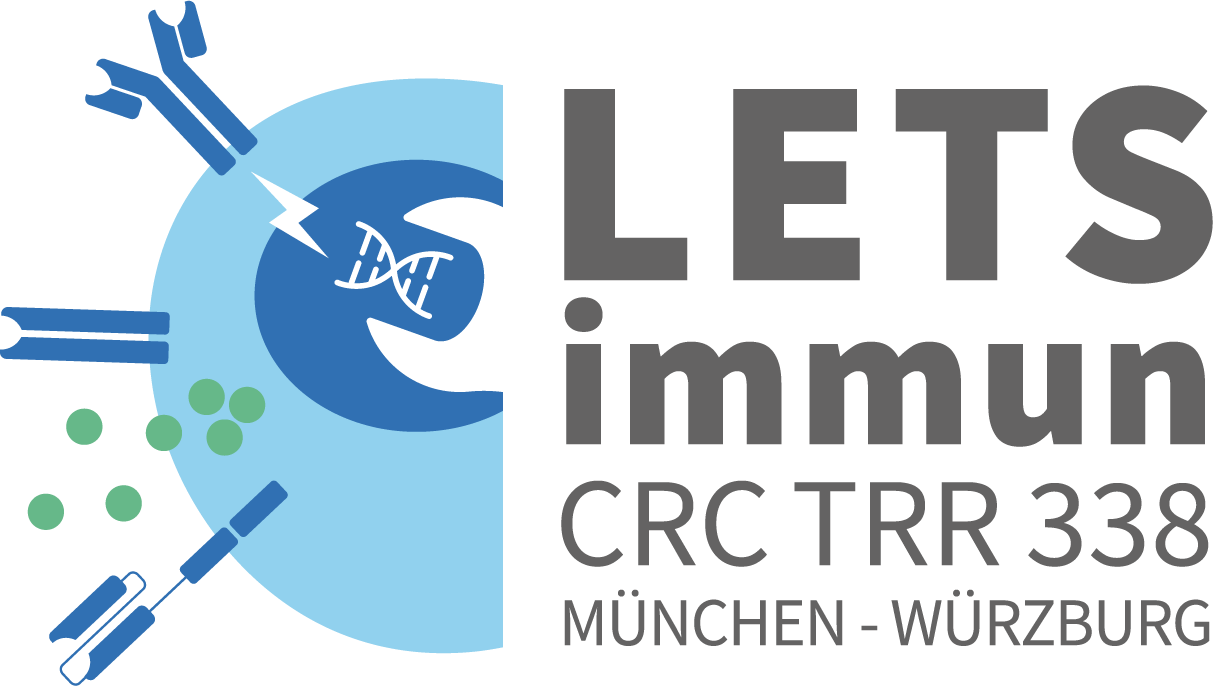Title
Orthotopic T cell receptor replacement by advanced non-viral cell engineering
Research Area
Antigen-specific T cell receptor identification and recombinant expression, safety evaluation
Project Summary
The T cell receptor (TCR) repertoire of healthy individuals and patients represents an almost unlimited resource for the identification of antigen-specific receptors and their subsequent use in adoptive immunotherapy. However, engineering large numbers of TCRs with different HLA restrictions for clinical applications remains a major challenge. Currently used (unphysiological) technologies for recombinant TCR expression generate highly variable, therefore unpredictable, T cell products in terms of safety and function.
Project-Related Publications
Knabel, M., Franz, T.J., Schiemann, M., Wulf, A., Villmow, B., Schmidt, B., Bernhard, H., Wagner, H., and Busch, D.H. (2002). Reversible MHC multimer staining for functional isolation of T-cell populations and effective adoptive transfer. Nat. Med. 8, 631–637.
Stemberger, C., Huster, K.M., Koffler, M., Anderl, F., Schiemann, M., Wagner, H., and Busch, D.H. (2007). A Single Naive CD8+ T Cell Precursor Can Develop into Diverse Effector and Memory Subsets. Immunity 27, 985–997.
Buchholz, V.R., Flossdorf, M., Hensel, I., Kretschmer, L., Weissbrich, B., Gräf, P., Verschoor, A., Schiemann, M., Höfer,
T., and Busch, D.H. (2013). Disparate individual fates compose robust CD8+ T cell immunity. Science 340, 630–635.
Dössinger, G., Bunse, M., Bet, J., Albrecht, J., Paszkiewicz, P.J., Weißbrich, B., Schiedewitz, I., Henkel, L., Schiemann,
M., Neuenhahn, M., Uckert, W., and Busch, D.H. (2013). MHC Multimer-Guided and Cell Culture-Independent Isolation of Functional T Cell Receptors from Single Cells Facilitates TCR Identification for Immunotherapy. PLoS One 8.
Nauerth, M., Weißbrich, B., Knall, R., Franz, T., Dössinger, G., Bet, J., Paszkiewicz, P.J., Pfeifer, L., Bunse, M., Uckert, W., Holtappels, R., Gillert-Marien, D., Neuenhahn, M., Krackhardt, A., Reddehase, M.J., Riddell, S.R., and Busch, D.H.(2013). TCR-ligand koff rate correlates with the protective capacity of antigen-specific CD8+ T cells for adoptive transfer. Sci. Transl. Med. 5, 192ra87.
Graef, P., Buchholz, V.R., Stemberger, C., Flossdorf, M., Henkel, L., Schiemann, M., Drexler, I., Höfer, T., Riddell, S.R., and Busch, D.H. (2014). Serial transfer of single-cell-derived immunocompetence reveals stemness of CD8(+) central memory T cells. Immunity 41, 116–126.
Stemberger, C., Graef, P., Odendahl, M., Albrecht, J., Dössinger, G., Anderl, F., Buchholz, V.R., Gasteiger, G., Schiemann, M., Grigoleit, G.U., Schuster, F.R., Borkhardt, A., Versluys, B., Tonn, T., Seifried, E., Einsele, H., Germeroth, L., Busch, D.H., and Neuenhahn, M. (2014). Lowest numbers of primary CD8(+) T cells can reconstitute protective immunity upon
adoptive immunotherapy. Blood 124, 628–637.
Paszkiewicz, P.J., Fräßle, S.P., Srivastava, S., Sommermeyer, D., Hudecek, M., Drexler, I., Sadelain, M., Liu, L., Jensen, M.C., Riddell, S.R., and Busch, D.H. (2016). Targeted antibody-mediated depletion of murine CD19 CAR T cells permanently reverses B cell aplasia. J. Clin. Invest. 126, 4262–4272.
Neuenhahn, M., Albrecht, J., Odendahl, M., Schlott, F., Dössinger, G., Schiemann, M., Lakshmipathi, S., Martin, K., Bunjes, D., Harsdorf, S., Weissinger, E.M., Menzel, H., Verbeek, M., Uharek, L., Kröger, N., Wagner, E., Kobbe, G., Schroeder, T., Schmitt, M., Held, G., Herr, W., Germeroth, L., Bonig, H., Tonn, T., Einsele, H., Busch, D.H., and Grigoleit, G.U. (2017). Transfer of minimally manipulated CMV-specific T cells from stem cell or third-party donors to treat CMV infection after
allo-HSCT. Leukemia 1–11.
Schober, K., Müller, T.R., Gökmen, F., Grassmann, S., Effenberger, M., Poltorak, M., Stemberger, C., Schumann, K., Roth,
T.L., Marson, A., and Busch, D.H. (2019). Orthotopic replacement of T-cell receptor α- and β-chains with preservation of
near-physiological T-cell function. Nat. Biomed. Eng..

